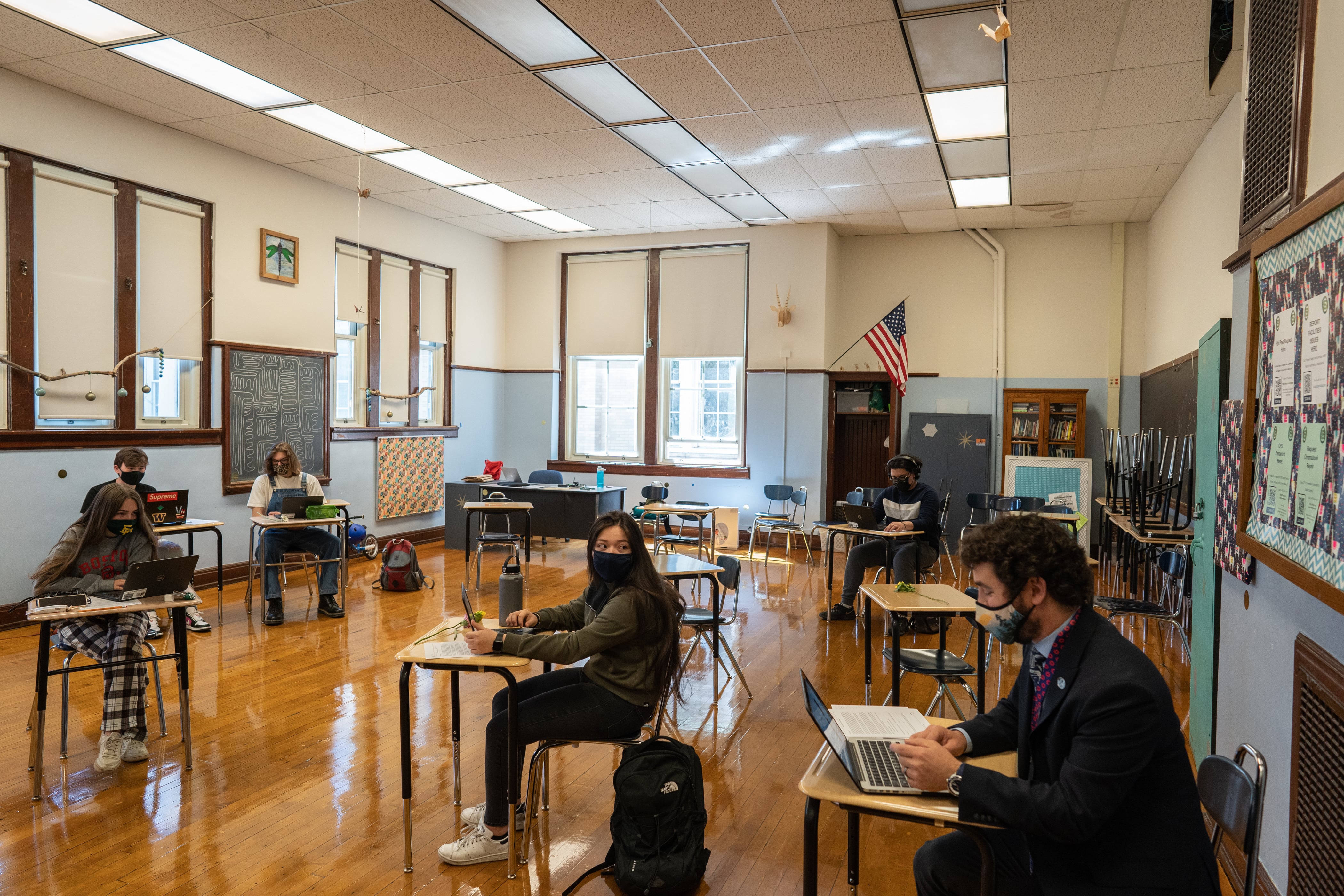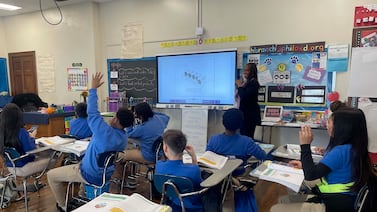A pandemic that reshaped American society and disrupted more than a year of schooling also slowed progress in math and reading for millions of U.S. students, according to new national data, which confirms Black, Latino, and low-income students were hit hardest.
Younger students saw some of the biggest declines, as did students attending high-poverty schools. That means the pandemic widened pre-pandemic test score gaps by race and economic status.
“It’s not that the pattern is necessarily out of what I would have expected, it’s just like — oh my gosh, we’re going to have to really work hard to provide resources to these students to help them catch up,” said Megan Kuhfeld, a researcher with the testing group NWEA.
The results may turn out to be the clearest national accounting of the academic losses of last school year. The results are likely to encourage academic recovery efforts, though there is still some debate about whether those gaps should be schools’ top priority when students return in the fall.
The data released Wednesday by NWEA focuses on students in grades three through eight and compares their progress this year to similar students from before the pandemic. By the end of last school year, the typical student was behind where they would normally be — three to six percentile points behind in reading and eight to 12 points behind in math, with younger students faring worse than their older peers.
In elementary grades, Black, Latino, and Native American students usually saw much steeper declines than white and Asian students. Students in high-poverty schools also saw bigger drops than those in more affluent schools.
For instance, the typical fifth grader at an affluent school would normally be at the 71st percentile in math, but fell to the 64th percentile, a seven-point dip. But students at low-income schools dropped from the 35th to the 24th percentile overall, an 11-point decline.
“Many of the students who were lower already showed the biggest drops,” said Kuhfeld, who coauthored the study. “That’s very alarming to me.”
Another analysis — based on a different test and released Tuesday by the consulting firm McKinsey — found similar results. First through sixth -graders were an average of five months behind where they would usually be in math and fourth months behind in reading.
Again, students of color and those from low-income families fell further behind. For instance, Black and Latino students typically lost six months in math, while white students lost four months.
“The losses are not only greater but also piled on top of historical inequities in opportunity and achievement,” wrote McKinsey researchers.
A shred of good news in the latest data: The worst case scenarios outlined by NWEA and McKinsey early in the pandemic did not come to pass.
The most dire projections assumed that learning would stop or students would actually regress while school buildings were closed. But students did continue to make academic progress last school year, according to both NWEA and McKinsey.
The researchers can’t pinpoint which aspects of the pandemic — remote learning, simultaneous teaching, disrupted school schedules, health or family-related stress, social isolation — specifically slowed students’ progress.
What’s clear is that many of those potential factors affected Black and Latino students the most. Those students were generally less likely to receive the option of in-person schooling, and more likely to opt out even when given the choice. In January of this year, for instance, most Black and Latino fourth graders were learning fully remotely, compared to roughly a quarter of white students.
Having some students in person and others remote was challenging, teachers say, especially for keeping remote students engaged.
“As one teacher trying to be basically two teachers at the same time, it just felt like it was a real disservice for kids who were remote,” said Neema Avashia, a Boston social studies teacher.
The new data is based on exams, the MAP Growth and the i-Ready, that are optional for schools but that are given to millions of students across the country each year. Still, these estimates of learning loss may be imprecise because they don’t capture students who didn’t take the test for any reason, including those who may have disengaged from school.
Schools were also required to give their end-of-year state exams, and initial data from Arkansas, Indiana, and Texas also show evidence of learning loss. But results from different states can’t be compared, since each uses a different test.
Concerns about the academic effects of the pandemic have spurred action. Earlier this year, Congress approved over $120 billion in funding for schools and required that a substantial chunk of it be spent to ameliorate learning loss, a phrase used in the federal law.
The McKinsey and NWEA researchers both say that their results point to an urgent need for schools to address these academic gaps. “Left unchecked, unfinished learning could have severe consequences for students’ opportunities and prospects,” write the McKinsey researchers.
Already, schools across the country are spending the money in a variety of ways: expanding summer school, tutoring students who are behind, adding counselors, lowering class sizes, and providing bonuses to teachers in a bid to improve retention.
But some educators like Avashia are concerned that schools will focus too narrowly on improving test scores next year instead of, for instance, providing support for the nearly 120,000 children who have lost a parent or caregiver to COVID.
“There are a whole lot of ed tech companies and other people who are using the learning loss narrative to market — here’s this thing you can buy that will catch kids up,” said Avashia. “We need to lean into the most human parts of teaching and learning. I feel worried that the learning loss narrative takes us away from that.”
Similarly, Jal Mehta, a Harvard education professor, fears that wealthier schools will continue to offer rich instruction with a variety of courses and experiences, while poorer schools will place even more emphasis on test prep to make up for learning loss — what he sees as a retread of the worst consequences of No Child Left Behind, the Bush-era education law.
But he also acknowledges that schools can and should address learning loss alongside other challenges that students are experiencing.
“Something like tutoring, if it’s done well, could create an opportunity to put another adult in a student’s life to create relationships,” he said.







